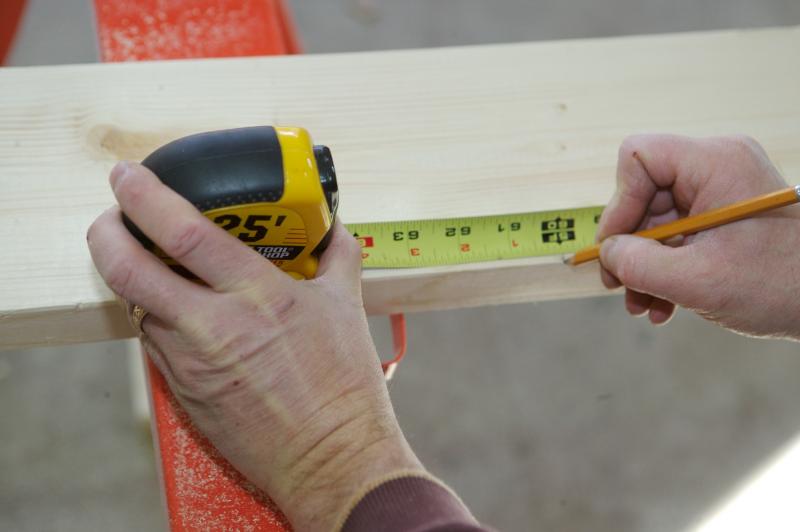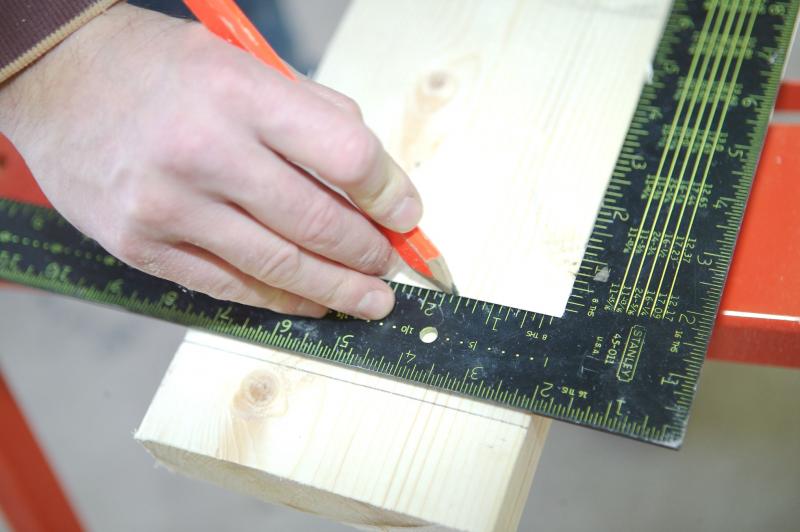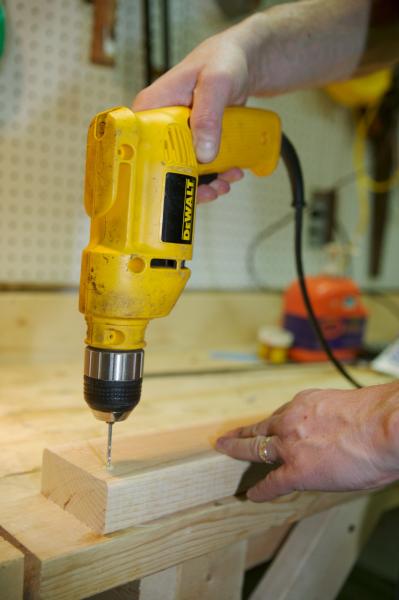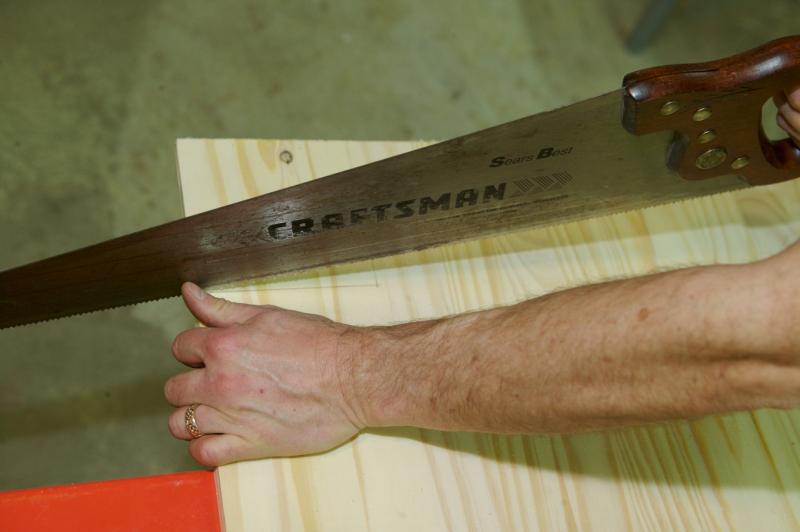HOW TO BUILD A SIMPLE WORKBENCH
This excerpt is from the book, How to Build Your Dream Garage by Lee Klancher. It describes how to build a simple, sturdy workbench ideal for your garage.
Building a workbench is a genuine pleasure. They go together easily, don’t cost a lot of money, and are fairly forgiving of the inevitable small mistakes made by novice carpenters.
This example is an extremely sturdy workbench that can be built in an afternoon. The 4x4 posts make it solid as a rock. The dimensions for our bench were dictated by the fact that it is being used in my friend’s basement. The bench is 42 inches high, 60 inches long, and 27 1/2 inches deep.
The 42-inch height is great for more dexterous work like rebuilding carburetors, but maybe a little high if you intend to do a lot of hammering. The 60-inch length is fine. If space permits, I suggest making it 6 or 8 feet long, just for the convenience of using standard-sized lumber.
The depth is that of five 2x6s and is adequate for most gearhead jobs. If you work on a lot of bulky parts, you might want to add another 2x6 or two and make it 33 or 38 1/2 inches deep. You can also add one more 2x6 and turn the back one up on end, which gives you a little backstop on the bench.
Supplies:
Note that all lumber is construction-grade pine
4 8-foot 2x4s
2 8-foot 4x4s
2 10-foot 2x6s
1 6-foot 2x6
100 2 1/2–inch wood screws
16 3 1/2-inch-long 5/16-inch lag screws or 16 5-inch-long 5/16-inch lag bolts
4x8 sheet of 1/2-inch plywood
Tools:
Cordless drill
1/4-inch drill bit
5/16-inch wood bit
Chuck and Phillips bit
Circular saw
Square
Pencil
Measuring tape
Ratchet and deep-well socket
Rubber mallet
Time: 2–3 hours
Tab: $80–$100

Start by cutting all your pieces to size. See the cut list below to build a bench of the same dimensions as we did. You can easily modify the dimensions to suit your tastes.
Top of bench ...................................... 60-inch 2x6s (5)
Legs....................................................... 40 1/2–inch 4x4s (4)
Support Box Sides.............................. 54-inch 2x4s (4)
Support Box Ends.............................. 20 1/2–inch 2x4s (4)

Mark your cut with a square. If you are cutting with a circular saw, make a second mark to use as a guide for the for the saw’s fence.

The second line next to the cut gives you a visual guide to keep the fence parallel to the line. A compound miter saw will make perfectly square cuts, but a circular saw is adequate for this job.

The first pieces we built were the top and bottom support boxes. Pre-drill the 2x4s so that the wood screws don’t split the wood.
Lay the pieces on a square surface and fasten them with wood screws. We screwed it together loosely, with the screws just barely tightened, checked that everything was square, and then tightened the corners.
Here’s the completed support box. Build two of these.
Lay out one of the support boxes on a square surface (we used a sheet of pine board on two sawhorses) and put the four posts in the corners. Clamp them tight into the corners as shown, and pre-drill the holes for your lag screws or bolts with a 5/16-inch drill bit.
Lag bolts will need to be hammered through and then fastened with nuts and washers.
Flip the bench onto its legs and fasten the lower support box. We positioned it about 4 inches off the ground.
By covering the bottom support box in sheeting, you create a nice lower shelf and add a little stability. We found a pine board made of glued strips that was nearly exactly the right size and was priced only slightly more than a sheet of 1/2-inch plywood. Either works fine—the glued pine is just a bit stouter and better-looking. Cut the board to length.
Carefully measure the distance between the legs, then transfer the measurement to your bottom board. Make the bottom board about 1/8-inch narrower than the opening—you’ll need a little bit of wiggle room to slide the board in place.
Once the board is cut to length, notches need to be cut out so it will slide in between the legs. We used a handsaw, which allows for a cleaner cut in the corners.
Tap the board into place with a rubber mallet and fasten it to the frame with wood screws.
Screw the top boards onto the frame and you have a finished workbench. The top can be glued together to make it a bit smoother and more rugged, which was done in this case, after the bench was carried down into the basement.
If you enjoyed this, find more like it in the book How to Build Your Dream Garage by Lee Klancher.


